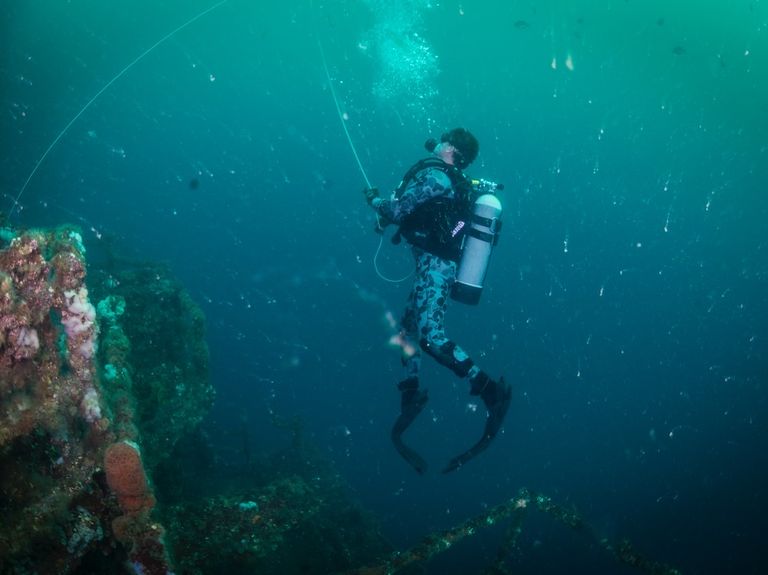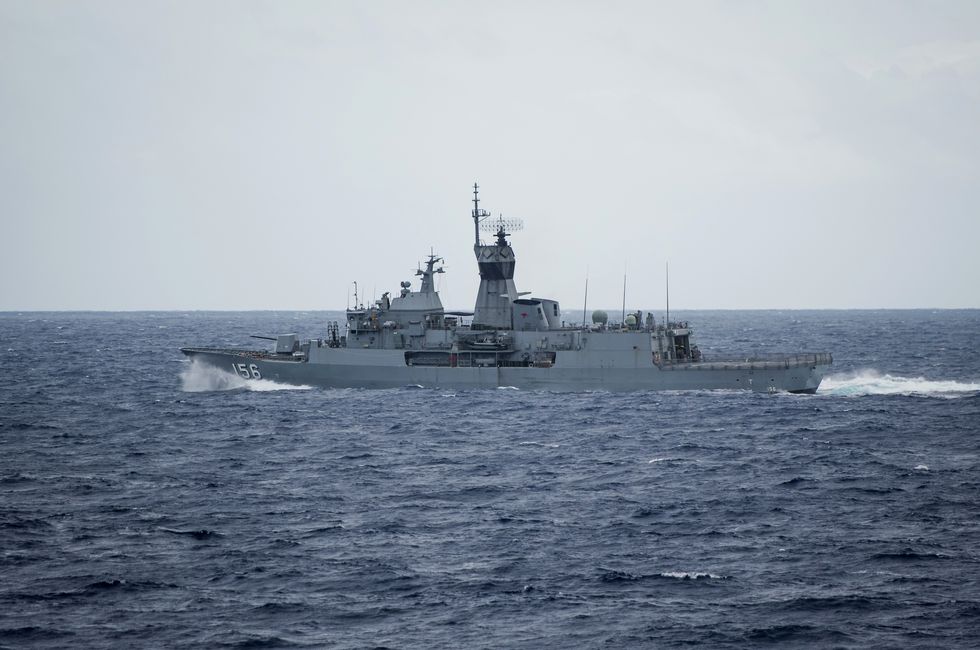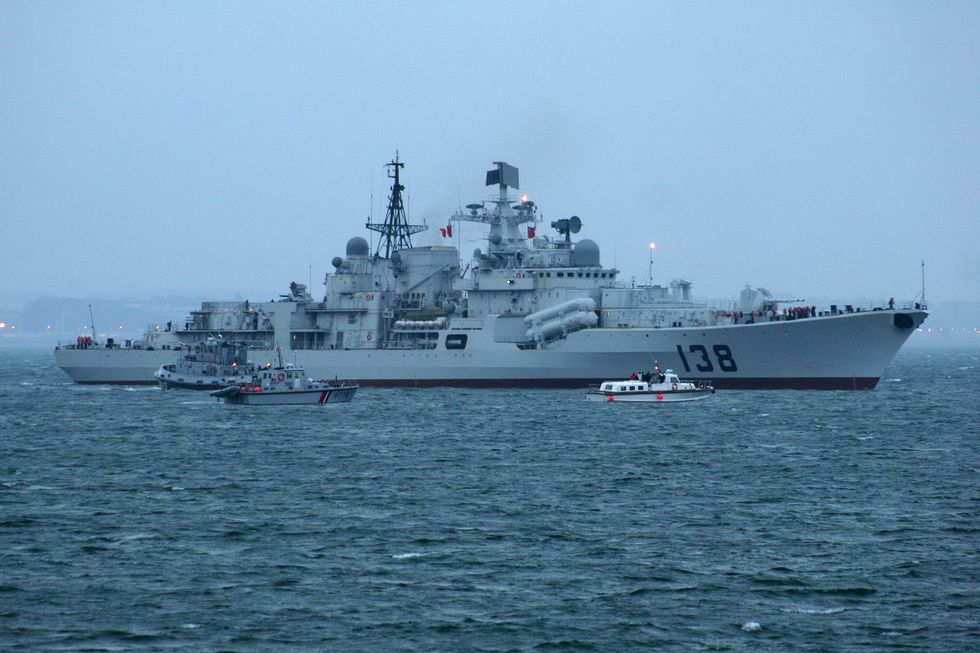Royal Australian Navy divers were recently injured in an incident between Chinese and Australian warships, all without either side touching the other. The divers, working underwater at the time of the incident, were injured by one or more sonic blasts from a Chinese destroyer’s sonar system. The sonar system uses loud pulses of sound to detect submarines—pulses that could severely injure or even kill anyone in their path.
Ningbo vs Toowoomba
The incident took place last week in international waters in the East China Sea, an arm of the Pacific Ocean surrounded by China, Japan, and the Korean peninsula. Australian warship HMAS Toowoomba was in the region enforcing sanctions imposed on North Korea by the U.N. Security Council, in response to Pyongyang’s illegal nuclear weapons program. Toowoomba and its embarked helicopter, Valkyrie, were in the area to stop illegal ship-to-ship transfers of goods, such as oil and other petroleum products, from smugglers to the regime of North Korean leader Kim Jong un.
According to the Australian Ministry of Defense, Toowoomba had stopped to clear fishing nets that had fouled the ship’s propellers. The ship sent divers into the water to accomplish the task. The Ministry of Defense stated:
While diving operations were underway a PLA-N destroyer (DDG-139) operating in the vicinity closed towards HMAS Toowoomba. Toowoomba again advised the PLA-N destroyer that diving operations were being conducted and requested the ship keep clear.
Despite acknowledging Toowoomba’s communications, the Chinese vessel approached at a closer range. Soon after, it was detected operating its hull-mounted sonar in a manner that posed a risk to the safety of the Australian divers who were forced to exit the water.
The Australian government stated that the divers, upon medical examination, “had sustained minor injuries likely due to being subjected to the sonar pulses from the Chinese destroyer.”
How Sonar Works
Sonar, or sonic navigation and ranging, is a sensor device first used in World War II to detect submarines. There are two types of sonar: passive and active. Passive sonar simply involves using underwater microphones, known as hydrophones, to listen for the telltale sounds of submarines, like propellers moving through water, engine noise, and even the opening and closing of hatches. Passive sonar simply collects noise, like a giant ear, and is harmless.
The other type of sonar is active sonar, and it is far from harmless. Active sonar involves broadcasting a short burst or pulse of sound energy known as a “ping.” This ping races through the water, bounces off an underwater object like a submarine, and then returns to the sub that sent it. Repeated pulses can allow the broadcaster to discern the location, speed, depth, and direction of an enemy submarine.
The Physical Side Effects of Sonar
The Chinese destroyer Ningbo is a Russian Sovremenny-class guided-missile destroyer equipped with an MG-335S Platina-MS-E multifunction bow-mounted sonar. We don’t know how loud the Platina, known to NATO as “Bull Horn,” broadcasts its ping. But the AN/SQS-53C bow-mounted sonar, featured on the U.S. Navy’s Arleigh Burke-class destroyers, broadcasts at a whopping 253 decibels at one meter, with individual ping lengths of 1 to 3 seconds.
A pair of 1990s U.S. Navy medical studies formed the basis of the Navy’s sonar safety regulations. The two studies concluded that sonar noise below 160 decibels would not physically harm divers (though it would probably scare the hell out of them). As a result of the studies, the U.S. Navy’s towed SURTASS LFA sonar system, meant to provide surveillance of enemy submarines across the world’s oceans, is prohibited from operating above 145 decibels when divers are known to be in the area.
Since the Australian divers sustained injuries, albeit minor ones, the Chinese destroyer’s sonar was likely operating above 160 decibels.
Watch: Submarine sonar scares divers. (Turn volume down!)
What are the physical side effects of high-decibel sonar on humans? The science of how “loud” sonar pulses affect humans is unknown territory because of the risks to human health. It’s obvious that too loud a pulse will injure a human being, but exactly at what level seems to vary from person to person.
Sonar blasts are theorized to cause a buildup of nitrogen in the blood of marine mammals, causing decompression sickness. In 2000, a trial by the U.S. Navy of a 230 decibel sonar transmitter in the frequency range 3 to 7 kHz resulted in the beaching of 16 whales, seven of which were found dead. Injuries included “death from lung hemorrhage or other tissue trauma,” “temporary or permanent hearing loss or impairment,” and “psychological and physiological stress.”
The Takeaway
It seems unlikely that the Ningbo would have used its sonar if it merely knew another surface warship was nearby. The use of sonar against divers, like the use of lasers and water cannons, is another example of dangerous behavior by the People’s Liberation Army Navy to harass its rivals. Some day, someone is really going to get hurt by this sort of reckless activity, and China won’t be able to call it an accident.

Kyle Mizokami is a writer on defense and security issues and has been at Popular Mechanics since 2015. If it involves explosions or projectiles, he's generally in favor of it. Kyle’s articles have appeared at The Daily Beast, U.S. Naval Institute News, The Diplomat, Foreign Policy, Combat Aircraft Monthly, VICE News, and others. He lives in San Francisco.
















